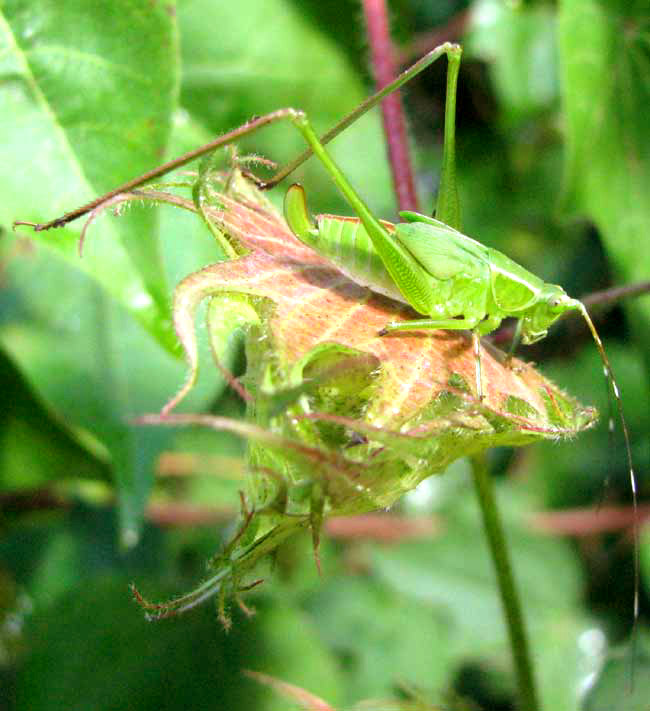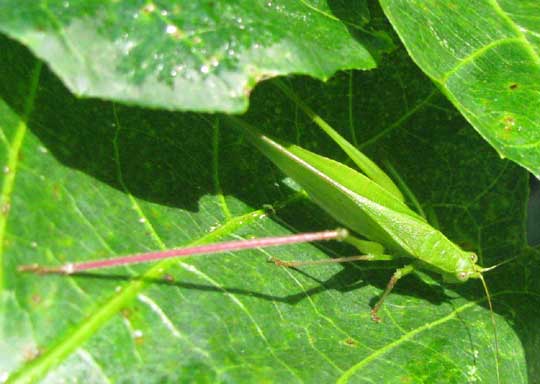Excerpts from Jim Conrad's
Naturalist Newsletter

from the December 11, 2011 Newsletter issued from Hacienda Chichen Resort beside Chichén Itzá Ruins; limestone bedrock; elevation ~39m (~128ft), N20.675°, W88.569°; central Yucatán state, MÉXICO
ANGLEWING KATYDID NYMPH
Above that's a katydid nymph -- a nymph being an immature stage of insect undergoing incomplete metamorphosis -- atop a Tree Cotton's developing boll You know that it's immature because its wings are only partly developed. Also, it's a female, because of that curved blade-like thing at the end of her abdomen. That's an ovipositor, used for depositing eggs.
*UPDATE: At that point, I couldn't identify our katydid further. In 2024, with much more information on the Internet, this looks like the Mexican Bush Katydid, SCUDDERIA MEXICANA, occurring throughout Mexico and the US southwestern states, up to central California.
Despite the extensive distribution of the species, and its appearing on many lists as present, I find little information about the Mexican Bush Katydid's life, other than that it feeds on a large variety of plants, and likes hot areas.
from the December 18, 2011 Newsletter issued from Hacienda Chichen Resort beside Chichén Itzá Ruins; limestone bedrock; elevation ~39m (~128ft), N20.675°, W88.569°; central Yucatán state, MÉXICO
KATYDID WARMING IN THE SUN
On some mornings this week it was chilly enough for your breath to form steam if you stepped outside after drinking something hot. However, most mornings also have been clear, so at sunrise the sun's rays soon began burning off dew and warming things up. That's when butterflies find leaves facing directly into the sun and for several minutes perch holding their wings perpendicular to the incoming rays, basking. Birds perch on high, leafless snags preening in the sunlight, or just sitting there looking about.
On a Chaya bush next to the hut, on two such mornings an angular-winged katydid cautiously leaned from her overnight shelter of two leaves almost touching another below, exposing herself to the sun, as shown below:

Since a katydid has been showing up in the same general area almost daily for the last two weeks, I'll bet that this is the same one we looked at last week when she was still in a nymphal stage with her wings not yet expanded (see above).